What is Lead Generation? The Beginner’s Guide to Generating Business Leads in 2025
Discover how to build a winning strategy that attracts high-quality leads.
Lead generation is vital for the growth of B2B businesses, enabling you to differentiate your brand, connect with potential customers, and guide them through their purchasing journey.
Yet, despite its significance, effective lead generation continues to be one of the most challenging tasks for marketers.

Source
We understand why it feels overwhelming. You must build a system that creates content, drives traffic, converts it, and qualifies leads before handing them off to your sales team.
And you need to do this at scale, all while competing for your buyer's attention in a crowded media landscape.
But it doesn't have to be as intimidating as it sounds. This thorough guide looks at each stage of developing a lead generation strategy as clear, actionable steps.
Whether you're a complete beginner or an experienced marketer looking to optimize your approach, you'll find practical advice and easy-to-follow explanations to help you generate more high-quality leads.
Ready to learn more? Let’s begin.
What is lead generation?
Before we get into the details, let's make sure we're talking about the same thing. In this section, we'll look at lead generation meaning.
What is a lead?
A lead is anyone who expresses interest in your company's goods or services but may not be ready to buy yet.
This interest is represented as an exchange of information, such as providing a name and email address for a piece of content.
Don’t confuse leads with prospects. There’s a difference. A lead is a potential customer who must be qualified to become a prospect. (This means they’re a good fit for your business and may want to do business with you in the future.)
There are four different types of leads depending on their level of interest:
-
Marketing Qualified Lead (MQL): These leads have shown interest through marketing efforts like downloading a whitepaper, attending a webinar, or filling out a contact form. They're more likely to become customers than general contacts.
-
Sales Qualified Lead (SQL): These leads are vetted by the sales team and considered ready for direct sales engagement. They typically demonstrate a stronger intent to purchase and often match the characteristics of an ideal customer.
-
Product Qualified Lead (PQL): These leads have used a product, often through a free trial or freemium version. They show behaviors indicating readiness to convert to paying customers, such as frequent usage or engaging with premium features.
-
Service Qualified Lead: These leads express interest in a company's service offerings, often through initial consultations or requests for additional information.
What is the lead generation process, and how does it work?
Lead generation means attracting and engaging your target audience to the point where they want to give you their information.
This process drives targeted traffic to your website, captures visitor information, and nurtures those who fit your buyer personas.
This is the first step in building a meaningful relationship with a potential customer.
Lead generation can usually be categorized into two main types.
Inbound lead generation
Inbound lead generation attracts potential customers by providing valuable content tailored to their needs and interests. Instead of traditional outbound methods like cold calls, it uses tools such as blogs, social media, SEO, and content marketing to draw visitors in, engage them, and build trust.
By addressing the pain points and interests of the target audience, businesses can convert visitors into leads through calls-to-action, landing pages, and lead capture forms. This approach ensures a cost-effective and sustainable way to acquire qualified leads and nurture them into loyal customers.
Outbound lead generation
Outbound lead generation is a proactive strategy where businesses initiate contact with potential customers through direct outreach. This approach involves identifying prospects and contacting them via various channels such as cold calls, emails, direct mail, and advertising. The goal is to capture the interest of these prospects and convert them into leads, ultimately guiding them through the sales funnel.
Outbound lead generation relies on targeted efforts to find and engage potential customers who may not actively seek the product or service. While it can be more intrusive, outbound lead generation can quickly generate leads and drive immediate results, making it a valuable component of a comprehensive marketing strategy.
Why is lead generation important?
Over 30% of B2B sales take one to three months to close. Lead generation is critical for B2B success. Why? The answer can be summed up in two words: sales cycle.
Why does this matter? Capturing a potential customer’s information at the beginning of this process allows you to influence it. And with buyers facing more distractions than ever, you’ll need all the influence you can get.
Also, once you’ve captured a lead’s information—you can qualify them. This means you determine which will most likely generate revenue for your business and focus your time and energy on converting those.
If you can establish a lead generator that results in high-quality business leads and scales, then you’ve found the key to delivering sustainable growth for your organization.
The sales lead generation funnel
At first sight, it may seem that your potential buyers take a rather random approach to buying. Sometimes they make a purchase, and sometimes they don't. But this couldn't be further from the truth.
While each individual makes a purchase differently, there's still a process leading up to your buyer's decision. Marketers have developed the concept of a lead generation funnel to visualize the entire process and become capable of influencing it.
B2B companies need a lead generation funnel for the simple reason that, in most cases, a purchase takes a long time to develop. Research shows that 48% of companies say leads require a long cycle before purchasing.

Source
Your company needs a patient, steady approach to sales.
Instead of focusing on making a sale right away, as may happen with a B2C company, a B2B marketer needs to develop a long-term approach to their sales process. This allows them to segment potential clients, nurture them properly, and hand them over to the sales teams once they're ready to buy.
Unfortunately, 68% of companies haven’t even identified their funnel yet.
In this chapter, we’ll show you what a business lead generation funnel is, how to define it, and how to build yours.
What is a lead generation funnel?
A lead generation funnel represents the journey a person takes from the moment they give you their information to the moment they make a purchase.
Defining this is super important because 50% of qualified leads aren’t ready to purchase at first contact. Your funnel provides the roadmap to get them there.
It’s represented as a funnel because, at each stage, fewer people will meet the criteria needed to do business with your company.
Eventually, only a small percentage of those initial leads will become customers.
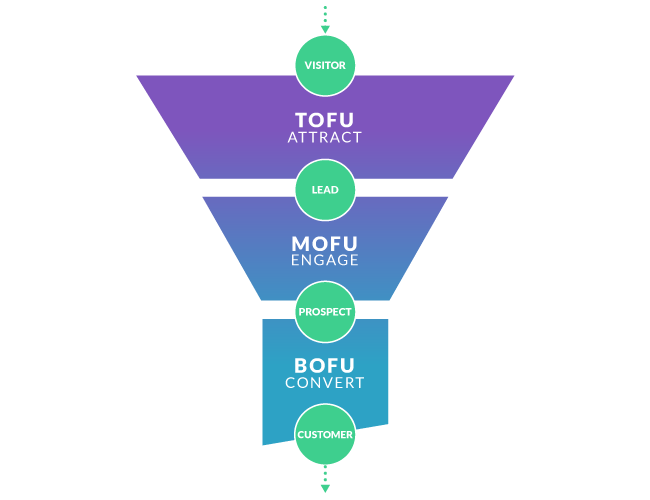
Content is critical to your funnel. But before we look at what content works and why, let's explain why it’s so important.
Why content is critical for your lead generation funnel
Content is the common denominator throughout the lead generation funnel. Whether that’s a blog, an ebook, or a case study, your content will be the tool to turn your lead into a prospect and a customer.
The key lies in segmentation. Use your content to identify where someone is in the buying process, then provide them with unique content that fits their needs to move them to the next stage.
With marketing automation systems and retargeting, you can deliver timely content that solves your lead’s problems. With each piece of engaged content, your lead will progress through your funnel to purchase.
Let’s look at the different types of content you can use at each step.
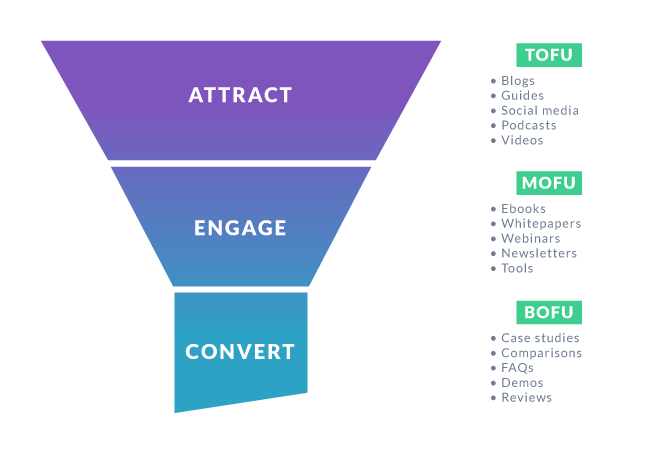
Top of the funnel (TOFU)
A lead generation funnel starts when your audience first visits your website.
The top of your lead generation funnel should concentrate on attracting a wide audience of potential customers. The goal is to build awareness and trust without focusing on your products.
There are many marketing tactics you can leverage to attract people at this stage of the funnel, including:
- Blogs
- Guides
- Social media
- Podcasts
- Videos
Your focus should be on providing value so you can create a connection with your audience.
You want the reader to feel enough trust to give you their personal information.
Middle of the funnel (MOFU)
The middle of the funnel is the stage where the visitors are ready to convert into leads.
While the previous step of the funnel created a personal connection with the visitor, this is where you use that trust to build a business relationship.
To get the visitor's personal information, you must offer gated content that solves a problem or satisfies a need.
After you capture their information, you can engage and educate your leads further, ultimately establishing your offering as the solution to their problems.
Leverage your market research and find a pain point big enough that could interest your readers.
Then, create content that addresses this directly, including:
- Ebooks
- White papers
- Webinars
- Newsletters
- Tools
Your chosen content will depend on your resources, target audience, and offering.
Bottom of the funnel (BOFU)
When a lead reaches the bottom of your lead generation funnel, they’re a prospect. They’ve been nurtured about the potential solutions to their problems, a solution that should involve your product or service.
You’re now their go-to resource. It’s time to sell.
Bottom-of-the-funnel content is tailored to converting your prospects into buyers. They’re almost there; you just need to help them overcome objections.
The types of content that you can use at the bottom of the funnel include:
- Case studies
- Comparisons
- FAQs
- Demos
- Reviews
At this stage, they know you, trust you, and like you enough to consider doing business with you. What they need now is the reassurance that their purchase decision will be the right one.
Each and every content type helps to lower objections and motivate the prospect to convert into a customer.
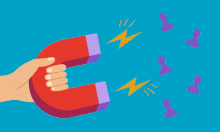 Deep dive
Deep dive Closing the Deal: How Content Marketing Can Turn Your B2B Leads into Customers
Read more
Content is there at each step of the lead generation funnel. Each stage involves different content approaches: at first, you need low-touch, educational content that engages people, while at the later stages, you need high-touch, transactional content that lowers the barriers to purchase.
Setting up your own lead generation funnel is vital to your organization's success. Remember that this is a long-term process that requires patience; the sooner you start, the better.
Start by defining your funnel, which should be adapted to your unique needs, offers, and industry. Then, get a clear understanding of where your content fits in each step of the funnel so you can plan it correctly.
As you create content and adapt it to your funnel, you will build the foundations of your marketing, lead generation, and lead nurturing efforts.
How to generate leads
Now that you’ve learned the basics of a lead generation strategy, it’s time for the exciting stuff—the generation of leads.
To start with, it might seem a little daunting. But don’t sweat it; you’re not alone.
63% of marketers say generating traffic and leads is their biggest challenge. Even more say their lead generation efforts are only slightly effective.

It doesn't have to be that way.
The entire process of lead generation can be summed up in five simple steps:
- Understand your buyer persona
- Create engaging content
- Attract the right audience
- Capture their information
- Qualify your leads
If all of this sounds new or hard to grasp, then worry not. In this chapter, you’ll learn how to apply the first two steps, and in the following three chapters, we’ll cover how to attract, capture, and qualify your leads.
Let's get started.
Understand your buyer personas
Throughout the lead generation funnel, content is critical in transforming visitors into leads and leads into customers. But content alone can't motivate people to give you their personal information. Your content needs to tap into an unmet need or problem they have.
You'll have the foundation for a successful lead-generation strategy if you can address your visitors' problems and help solve them through your content.
This raises a question: how do you identify and address the problems your visitors face?
The answer: use buyer personas.
How to use personas for your lead generation
Personas are a marketing term that describes idealized versions of your customers.
You build personas by leveraging quantitative and qualitative data from your current or desired customers. That means you can create personas either based on your customers or from customers you'd like to attract but haven't yet.
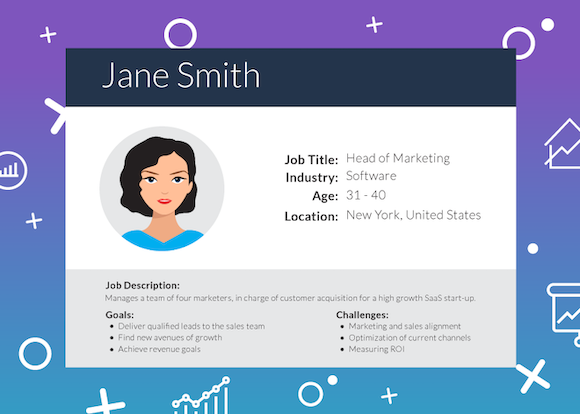
A buyer persona's goal is to identify your buyers' common characteristics and keep your marketing team focused on their needs. You can use two types of data to build these personas in practice.
Quantitative data helps you crystalize the hard numbers that make up your customers, including:
- Age
- Gender
- Job Title
- Location
- Industry
This data type can be found through web analytics (e.g., Google Analytics) and visitor identification software (e.g., Leadfeeder).
Qualitative data, on the other hand, helps you bring depth into your personas, adding unique parameters to them, including:
- The words they use to describe their problems
- The challenges they face on a daily basis
- The desires they have to improve their current situations
These types of answers can mean the difference between knowing and understanding your personas. The former is logical, while the latter is emotional. You need both aspects to create useful and actionable personas.
You can extract qualitative data through surveys and interviews. Most importantly, you can use your existing customer support, business development, and sales channels to understand your buyers' exact expressions, words, and ideas.
Once you’ve built your buyer personas, you should understand your target audience's key challenges and, more importantly, how your company can position itself to solve them.
How to use personas in your content creation
If there's one challenge all marketers face, it’s a lack of personalization in their customer communications. Consumers are tired of being bombarded with ever-more-impersonal messages, so 81% want brands to understand and know how to approach them. Sadly, 83% of marketers struggle with creating personalized content because they don't know their customers.
Personas allow you to create more relatable content for your target customer groups. Instead of creating one-size-fits-all content for each stage of your funnel, you can create something more personalized.
Here's how you can create personas and use them to guide your content creation.
Step #1: Segment your content based on your personas
As explained in the previous chapter, the content you create for each step—TOFU, MOFU, and BOFU content—will change in length, type, and level of detail. However, it should also change based on the data taken from your personas. This is how you personalize to create more impactful messaging.
For example, if one of your personas has a small budget, then a key issue that could slow their progress through your funnel is their price concerns. They may love your product or service but think it’s too expensive.
The goal of your content for this buyer is to highlight your value and their potential return on investment (ROI). They can't make the right decision if they don't understand the context behind the price.
Step #2: Create content for each stage of the funnel
For your price-conscious buyer to overcome their concerns, you must create the right content for them when deciding. You need to convert them after you’ve attracted them with an interesting blog article or captured their information with an ebook. This could mean creating comparison articles, highlighting product tiers, or providing an ROI calculator.
Understand what’s stopping them from progressing from one stage of the funnel to the next and create relatable content to address these problems.
Step #3: Deliver the content at the right time
How do you know when to deliver your ROI calculator to your price-conscious buyer? They’ve visited your pricing page and haven’t converted. They’re ready to buy. Now is the time to remove and address their pricing concerns.
This step requires you to know what content your buyer has already viewed to understand where they are in their journey.
Once they’ve viewed content that aligns with one of your funnel stages, it’s time to deliver content to help guide them to the next stage.
Step #4: Deliver it on the right channel
You must deliver your content in the right way and at the right time.
Your personas should define where your buyers spend their time online when consuming educational information, researching products, and making purchase decisions.
For example, your price-conscious buyer may research competitors on websites like G2 or TrustRadius or even do comparison searches on Google. In this instance, paying for ads on such searches or review sites will ensure you can direct your buyer to tailored content at this crucial stage in the buying process.
The lead generation process you've seen so far represents the foundation of your entire work. For that reason, it's paramount that you set it up correctly.
It’s not as daunting as it seems, and you won’t get it right the first time. But that’s not the goal. The goal is to establish a process. Once you have this, you can tweak, improve, and replicate it many times.
As your lead generation process grows in maturity, so will your revenues.
Lead generation marketing strategies
You understand how to structure your lead generation funnel, build buyer personas, and create the right content. Now, you need to reach your audience with your lead generation system.
How do you get people to your website and start generating leads?
It’s not as simple as it seems. Generating traffic to power lead generation is the number one challenge for two-thirds of marketers.
With companies publishing more content than ever and ad budgets increasing yearly, the competition for eyeballs is fierce.
To get results, you need to be laser-focused on your goal.
In this chapter, we’ll cover three ways to drive traffic to your lead generation funnel.
1. Search engine optimization
Search engine optimization (SEO) is the process of increasing the quantity and quality of visitors you receive from organic search results.
Why is SEO so important for lead generation? Because it can help you bring large volumes of visitors to the top of your lead generation funnel.
Once you've worked to get a piece of content ranking highly for a relevant search query, it will drive a sustained traffic flow. More importantly, this traffic is free.
There are a large number of factors that contribute to your search engine ranking. We won’t cover them here. But assuming you have the fundamentals in place, here are three steps you can take to ensure organic search traffic starts delivering you valuable leads.
Step #1: Define a set of keywords
The first step requires you to define a set of keywords. These keywords represent queries people use to find content; the more searches a given query has, the more traffic you can expect to attract.
If you have a Google Ads account, you can start your search with Google Keyword Planner. Alternatively, use a paid tool like Ahrefs, Moz, and SEMrush. These tools mix Google's data with their own to develop these estimations to help you find good keywords.
Here's an example of the search volume and difficulty Ahrefs reports for the keyword "SEO strategy."
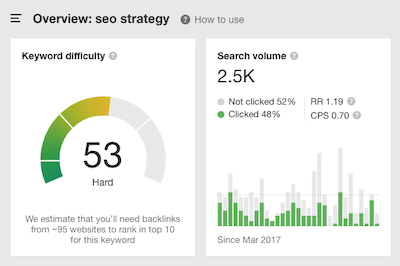
By considering both the traffic volume and the competitiveness of a keyword (which, in this case, is by the number of links pointing to the top 10 results for a given keyword), you can get a more balanced idea of the work you need to do to rank for a given keyword.
The previous example has a high volume of searches and is highly competitive. As Ahrefs explains above, to rank in the top 10 results, you would require backlinks from around 99 websites.
The key when searching for keywords is to be realistic. Strike the right balance between high volume, low competitiveness, and relevancy.
Relevancy is very personal to your own business. Ideally, you want search queries related to your product or service. Review your buyer personas and the problems your audience is trying to solve.
If you can help answer a question on these topics, you've taken the first step towards presenting your solution as an answer to their potential problem.
Step #2: Create content and optimize it
After your keyword research, you need to create content to rank for your keywords. The content you create should help people with questions and problems that aren't directly related to your solution. For example, if your product helps people generate leads (like Leadfeeder), we'll create content educating people about lead generation (like this guide). When creating potential content ideas, analyze the search engine results for your chosen keywords. This will help you understand what type of content that is already ranking. Then, create something better.
Before you publish a piece of content, you need to optimize it. For a more detailed view, you can check out this list from Moz's on-page ranking factors page.
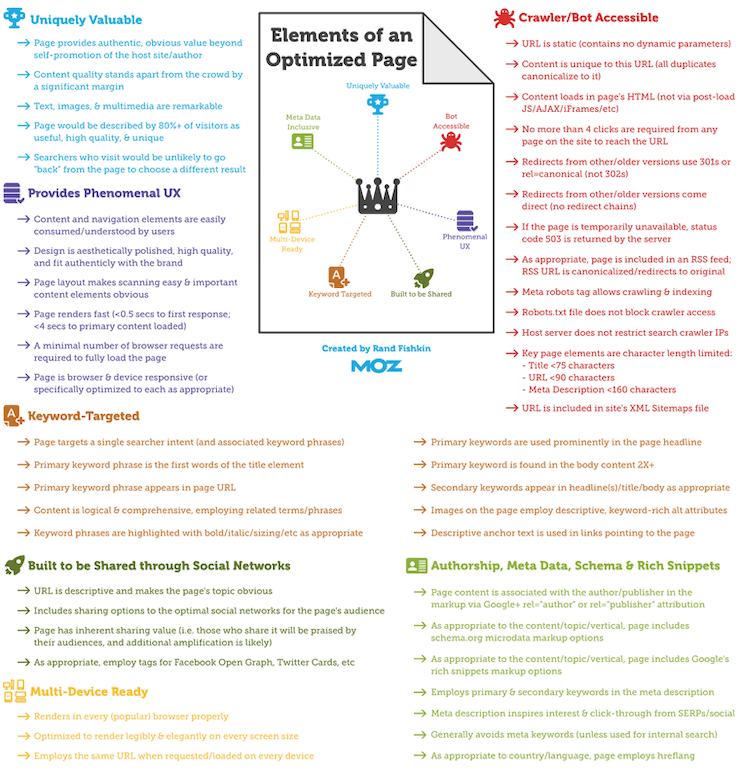
To improve your chances of ranking faster, you should aim to get a few internal and external links to your newly published post. This will let search engines find your page faster and consider it of higher authority.
Step #3: Offer a lead magnet
The lead generation work begins after you've started driving organic traffic to your content.
To convert visitors into leads, you need to offer a "lead magnet." This is a gated piece of content, like an ebook or webinar, that continues to help the reader.
The lead magnet should provide more depth to the original piece of content your visitor has consumed.
For example, this post from Pipedrive about defining lead prospects provides an ebook as a content upgrade:
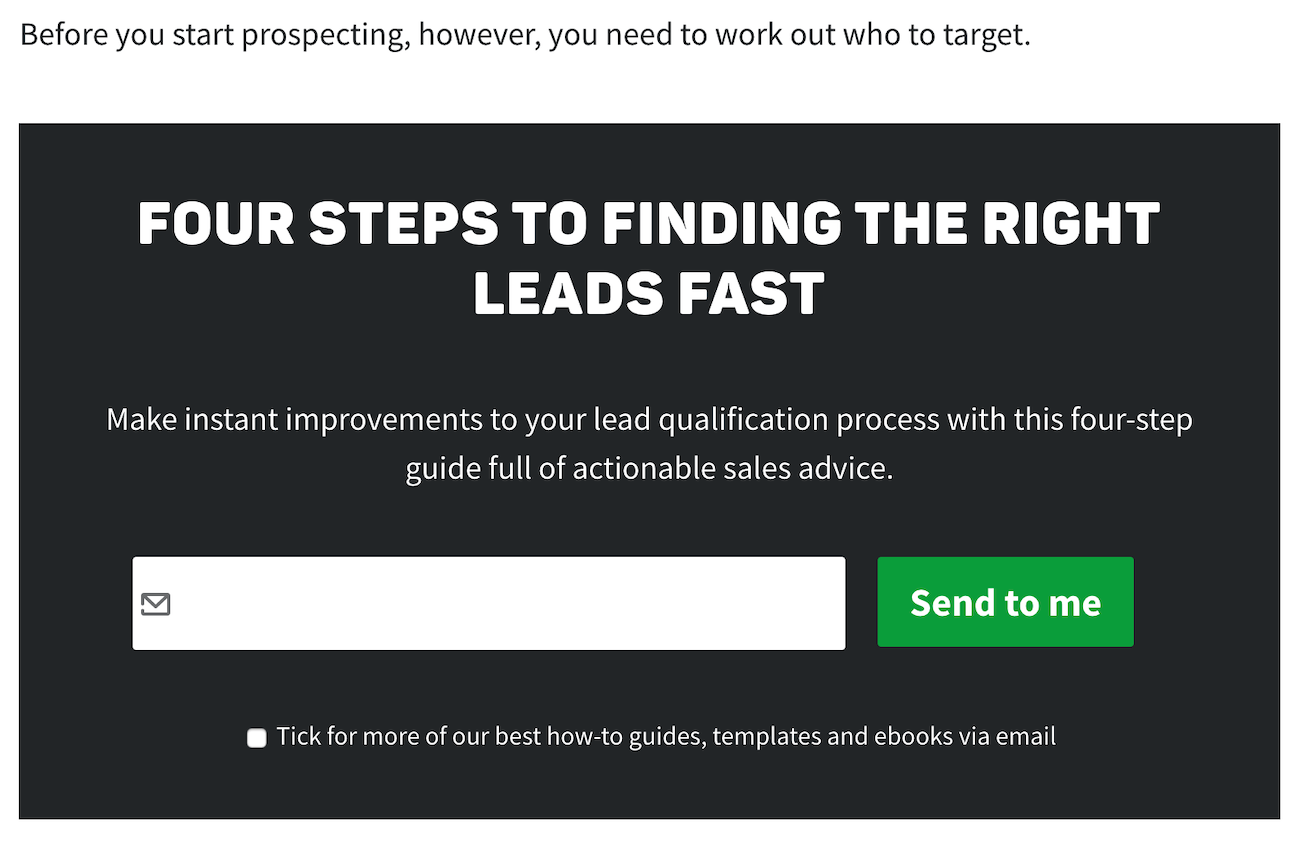
This lead magnet is a great next step for readers. After they’ve read the blog and learned how to define their leads, their next question will likely be: how do I find those leads? Pipedrive immediately provides the answer.
This is a low-friction way to capture the reader’s information.
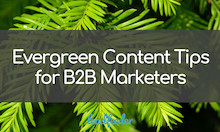
Your Beginner’s Guide to Evergreen Content for B2B Brands
Read more
2. LinkedIn advertising as part of a lead generation campaign
With more than 1 billion users and in-depth business data on all of them, LinkedIn is the best-paid platform for B2B lead generation.
According to research, 61 million LinkedIn users are senior-level influencers, while 40 million are in decision-making positions.
As a result, there are some real advantages to using LinkedIn for lead generation:
You can generate leads that are real decision-makers who influence the buyer process. The in-depth user data makes it easy to target your buyer personas. Campaigns can bring instant results as you get what you pay for. LinkedIn has a lead generation ad type, meaning people don't need to leave the platform, and you don't need to build landing pages.
To start a LinkedIn ads campaign, you have to define an objective like:
- Website visits
- Website conversions
- Lead generation
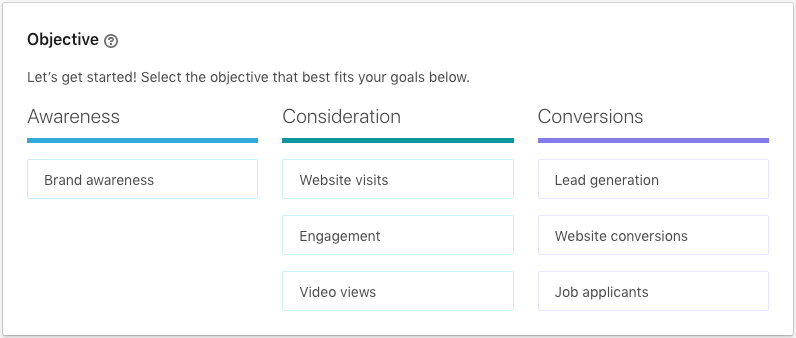
Since your goal is to generate leads, you should use the website visited or lead generation objectives.
The website visits objective will enable you to drive traffic to a landing page on your website, and the lead generation objective will enable you to generate leads directly within LinkedIn.
After the campaign objective has been defined, you need to select the targeting, which can include:
- Company
- Industry
- Demographics
- Education
- Job Experience
- Interests
The choice you make will depend on your company's needs. LinkedIn’s depth of data allows you to target your buyer personas precisely.
After the targeting, you need to create an ad, for which you have several options to choose from:
- Sponsored content
- Sponsored InMail
- Text ads
The Sponsored Content ad type is the best fit for driving traffic to content.
A website visits campaign will lead people to a landing page on your website, where they can enter their information to download your content. Ensure your ad clearly states that the content is gated so people aren’t frustrated when they click your ad and land on a download form.
A lead generation campaign will direct people to a lead form within LinkedIn, where their information is pre-populated. This reduces the friction of capturing lead information.
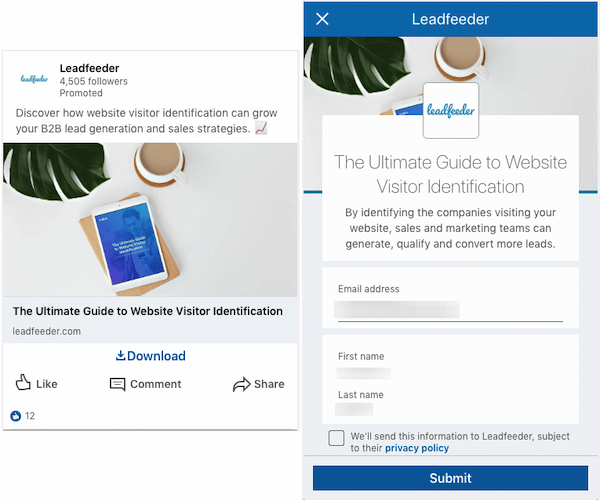
Before you can publish your ad campaign, you need to select a bid and budget. This will define the amount of money you will invest and the traffic you can expect to attract.
As a rule of thumb, the more money you invest in a campaign, the more traffic and leads you can generate.
For more information on how to build a winning LinkedIn campaign, check out our comprehensive LinkedIn ads guide.
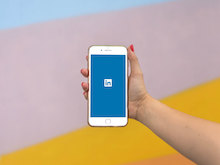
How to advertise on LinkedIn: A complete guide
Read more
3. Co-Marketing
The aim of co-marketing is to build a genuine relationship with companies that share your audience but aren't your direct competition.
Why? You can leverage one another’s expertise for content creation and audience for lead generation.
Instead of attracting "cold" traffic to a TOFU piece of content (i.e., traffic that doesn't know your brand and thus needs to become aware of its existence), you're leveraging the audience's trust with your partner.
When 84% of buyers begin the sales process from a trusted referral, your partner’s existing relationship with their audience is invaluable.
To get started with co-marketing, here's what you need to do.
Step #1: Identify potential co-marketing partners
The whole idea of co-marketing is to work with companies that share your target audience.
You want to start by looking in your industry for companies catering to the same audience but offering different products. Take some of the following examples:
- If you sell human resources software to sales managers, consider partnering with sales software companies.
- If you sell email marketing software to brick-and-mortar businesses, consider partnering with payment processing, accounting, and marketing software companies.
- If you sell analytics software for traditional financial institutions (i.e., banks, insurance companies, etc.), consider partnering with financial software companies.
Check your companies' offerings, content, and mission statements for a good complement.
Step #2: Find potential content ideas
After listing partners, you must look for potential partnership ideas. Think about the stage of the funnel you are most interested in improving.
If you want more qualified traffic, consider writing a guest post or a guide. If you want more leads, then consider writing an ebook. If you want more prospects, consider creating a webinar together.
Once you've defined a few potential ideas, pitch your potential partner. Make sure to be clear about what’s in it for them.
You should have clear data about your audience demographics, website traffic, email list size, and social following. Your goal is to ensure they see the value in reaching out to your audience.
Step #3: Promote each other's content
After you've created the content piece with your partner, it's time to promote it to both of your audiences.
Utilize all your owned media channels—and make sure your partner does too. This could include email marketing, social media, live chat, website content, and blogs.
The key is that both companies in the partnership should promote the content they create to their engaged audience. This represents a fantastic opportunity to reach a targeted, interested audience through a brand they already trust, something that’s difficult to do with other channels, such as paid advertising.
The three strategies mentioned above are just a few ideas you can implement. What's important is that you leverage your strengths to fulfill your company's needs.
Developing a channel strategy takes time. Try to balance short and long-term needs. If you do this, you’ll deliver immediate results to help get your strategy some buy-in and set yourself up for sustained success.
Now that we've covered this critical aspect of your lead generation strategy, it's time to see how you can capture leads.
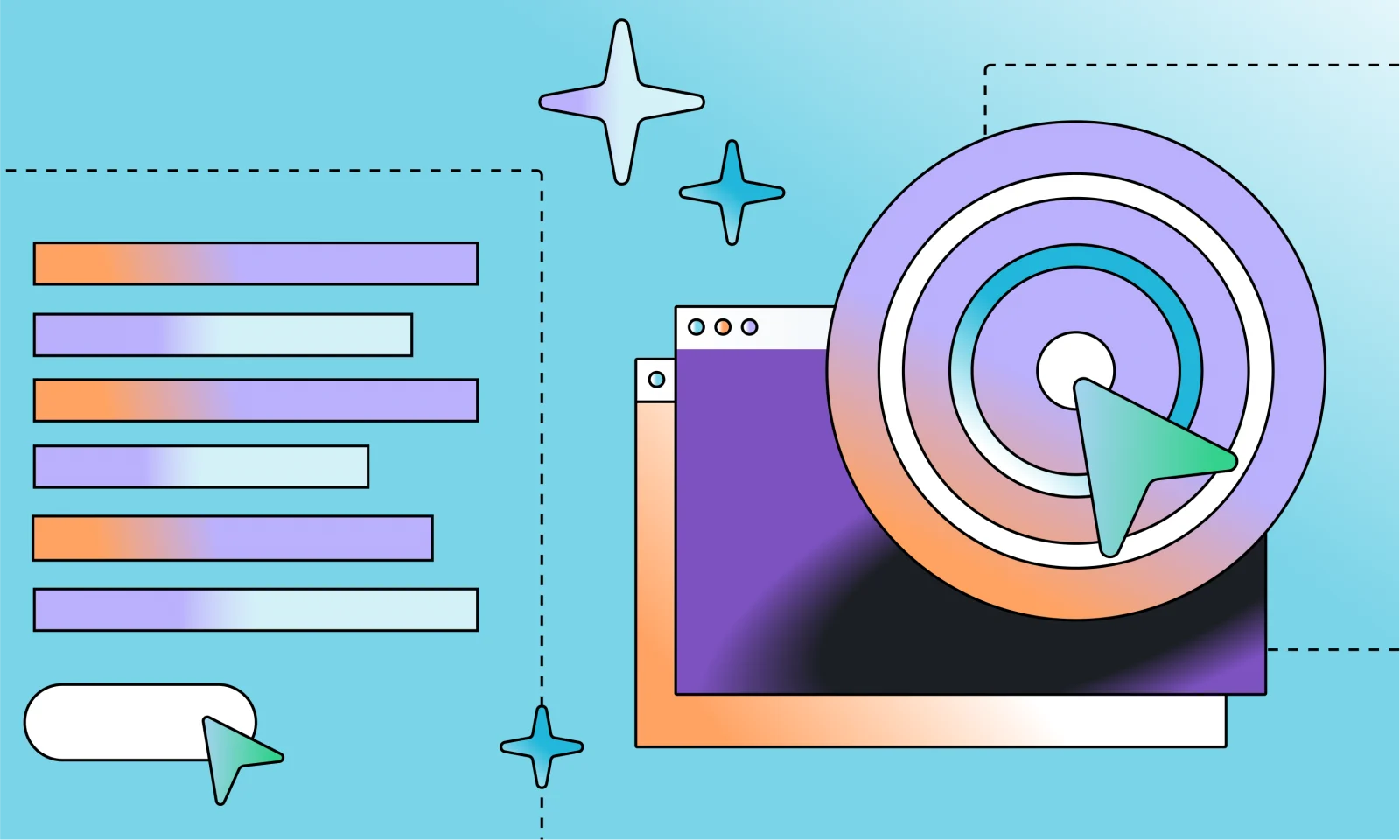
20 Lead Generation Strategies to Generate B2B Sales Leads in 2025
Read more
Lead generation techniques and examples
No matter how perfect a piece of content you offer your visitors, you won't generate any leads if you can't get people to exchange their personal information with you.
With data showing the number of people abandoning forms is steadily increasing, it’s safe to say it’s not getting any easier to capture people’s information.
So what’s the solution?
Well, the way you ask for people's information and the amount of information you ask for will have a huge impact on your conversion rates.
In this chapter, we’ll cover three different lead capture methods and highlight which situations they work best in.
1. Email capture forms
Email capture forms are the most popular way to generate leads.
You must be upfront and clear about what information you are asking for and why. This transparency is important when asking for personal information, especially when building trust.
But whopping 81% of people have abandoned a form after beginning to fill it out. Forms might be common, but that doesn’t mean people like filling them out.
So, if you’re going to use them effectively, you have to get a little creative.
Here are five strategies to improve conversion rates and convert more leads with email forms.
Connect with the content they are reading
Relevance is at the core of an effective lead capture process. That means you want to offer relevant content to the piece they're already consuming.
For example, in an article about Instagram statistics, Hootsuite offers readers a checklist detailing the steps one Instagramer took to grow their following by 600,000.
After clicking the link, a pop-up form asks for personal information and allows Hootsuite to acquire a lead without interrupting the reading experience.
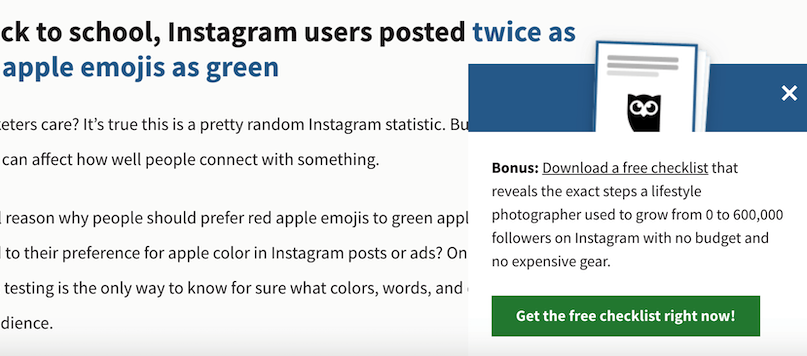
Only ask for the information you need
A big issue with lead capture forms is the friction they bring to the reader experience. By adding a lead capture form, you're often interrupting the reader, which can make them bounce from your page or site.
The key to a successful lead capture strategy is to reduce friction to the lowest possible amount. By asking only for the information you need, you provide a lower level of effort for the user to engage.
For example, blog subscription boxes often ask only for the reader's email. This is all you need to send a generic blog update.
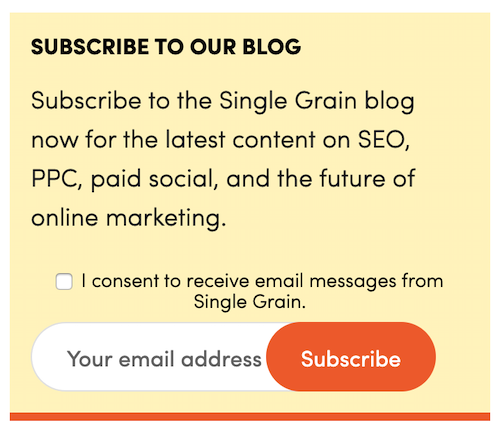
However, in the middle of the funnel, companies often ask for more information, including job title, company size, and name. This information will be vital when personalizing content or feeding leads to your sales team.
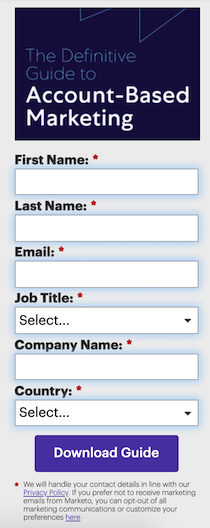
According to research, the average length of a lead capture form is five form fields. However, this doesn't mean you can or should use that many fields; several studies have found that the fewer fields you use, the higher the conversions.
The key is to know how your future communications need to be personalized. This will guide you to the information you must collect when capturing a lead.
Don’t make your forms look like forms
To lower friction and increase conversion rates, make your lead capture forms look like a native element of your content—that is, don't make them look like forms.
For example, Typeform’s lead capture forms provide users with a more conversational step-by-step process instead of asking for information in one long lead capture form.
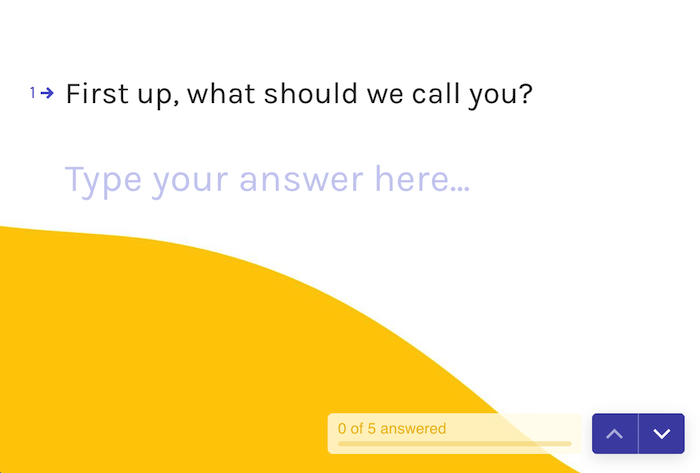
Use conditional logic
Another way to increase the effectiveness of your lead capture forms is to use conditional logic. Conditional logic lets you personalize your capture forms according to the user's answers.
With conditional logic, you can ensure you’re only asking the questions relevant to the user.
This lowers the size of your lead capture form and thus reduces the friction they can generate.
Use pop ups wisely
Among the many lead capture forms available, the most common and popular is the pop-up.
Sumo found that the average pop-up has a conversion rate of 3.09%, a number you can hardly ignore.
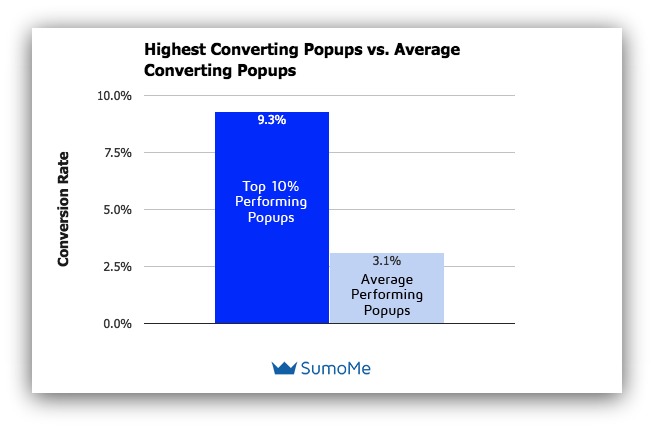
However, marketers’ love for pop-ups isn't shared by readers. 73% of Internet users automatically disapprove of pop-up ads.
Despite these challenges, you can still use a pop-up if you do it wisely. That means knowing when to trigger one.
To start, think about using exit intent technology. This shows a pop-up only when someone is trying to leave your page. A well-written message here can convert someone who has just finished reading some of your content.
The below example from Coschedule acknowledges that the visitor is about to leave, offering them an extra piece of relevant content before they go.
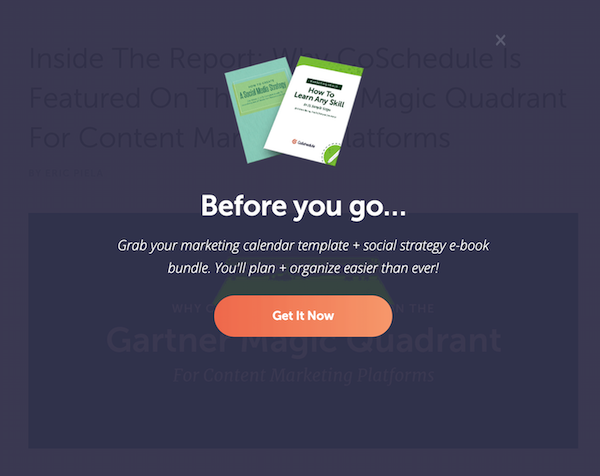
You can also think about triggering your pop-ups with other action-based behavior, like the percentage a user has scrolled or after someone clicks a button. The further the user scrolls down your page, the higher intent they have shown and, therefore, are likely more susceptible to your message.
Forms are still a great method for lead capture; you just need to remove obvious sources of friction. If you don’t, you won’t capture any leads. Keep your forms relevant, brief, and, if possible, fun.
2. Site chat
Site chat tools are a great way to help your visitors answer their doubts and questions, something that reduces friction and drop-out rates in your lead generation funnel. It's the preferred way for 42% of people to connect with a company.
Besides being a wonderful customer service tool, site chat is an effective way to capture leads in a more conversational way.
What's more, you don’t need a customer service rep speaking in real-time to a potential buyer because, nowadays, you can utilize chatbots. Site chat companies like Drift or Intercom can be used to capture leads at various stages across your funnel.
Drift practices what they preach. They use their site chat to capture leads for their ebook on their own website. This is a great way to provide a more informal, conversational approach to lead capture.
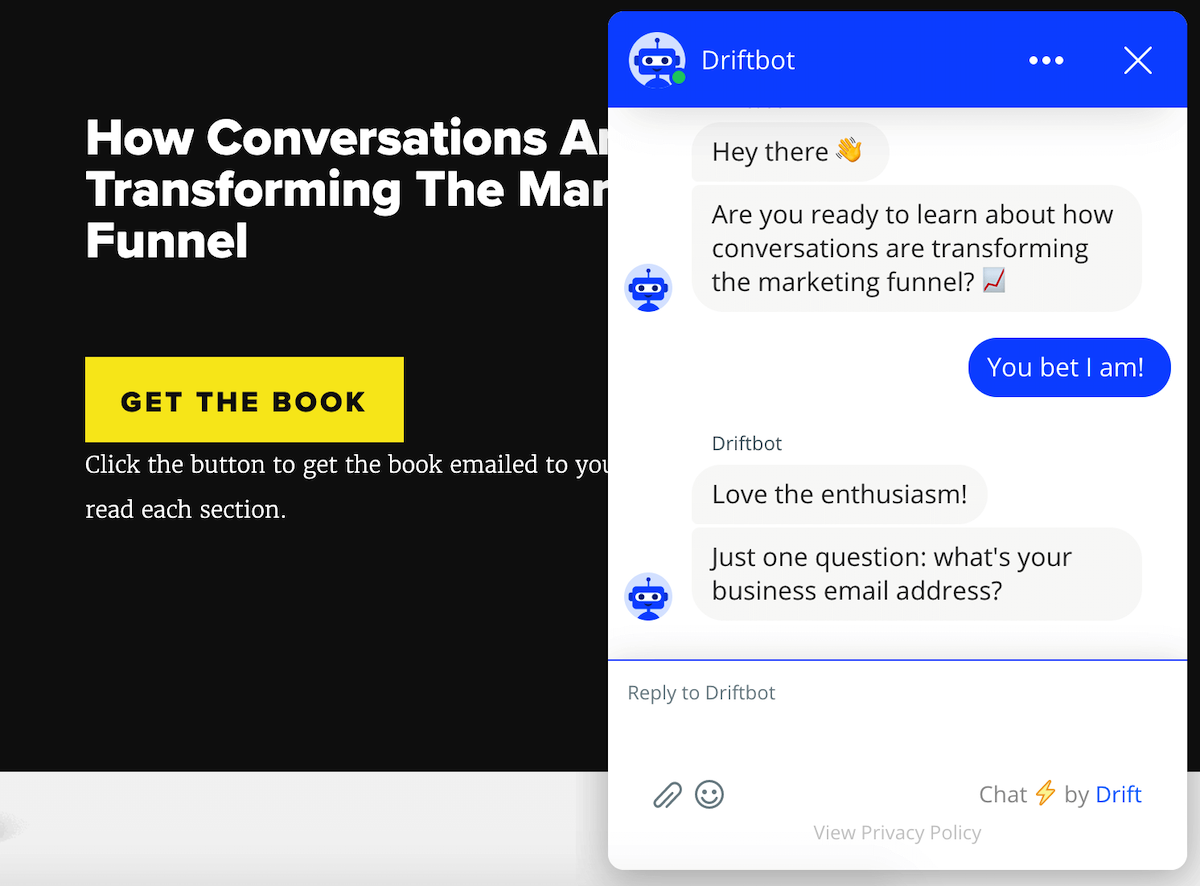
Besides being used for middle-of-funnel lead capture, site chat can also be used to capture more information from high-intent visitors and route them directly to sales. HubSpot does a great job of this on its pricing page.
By asking a few specific automated questions, they can provide more accurate pricing to the buyer and more detailed information to their sales team.
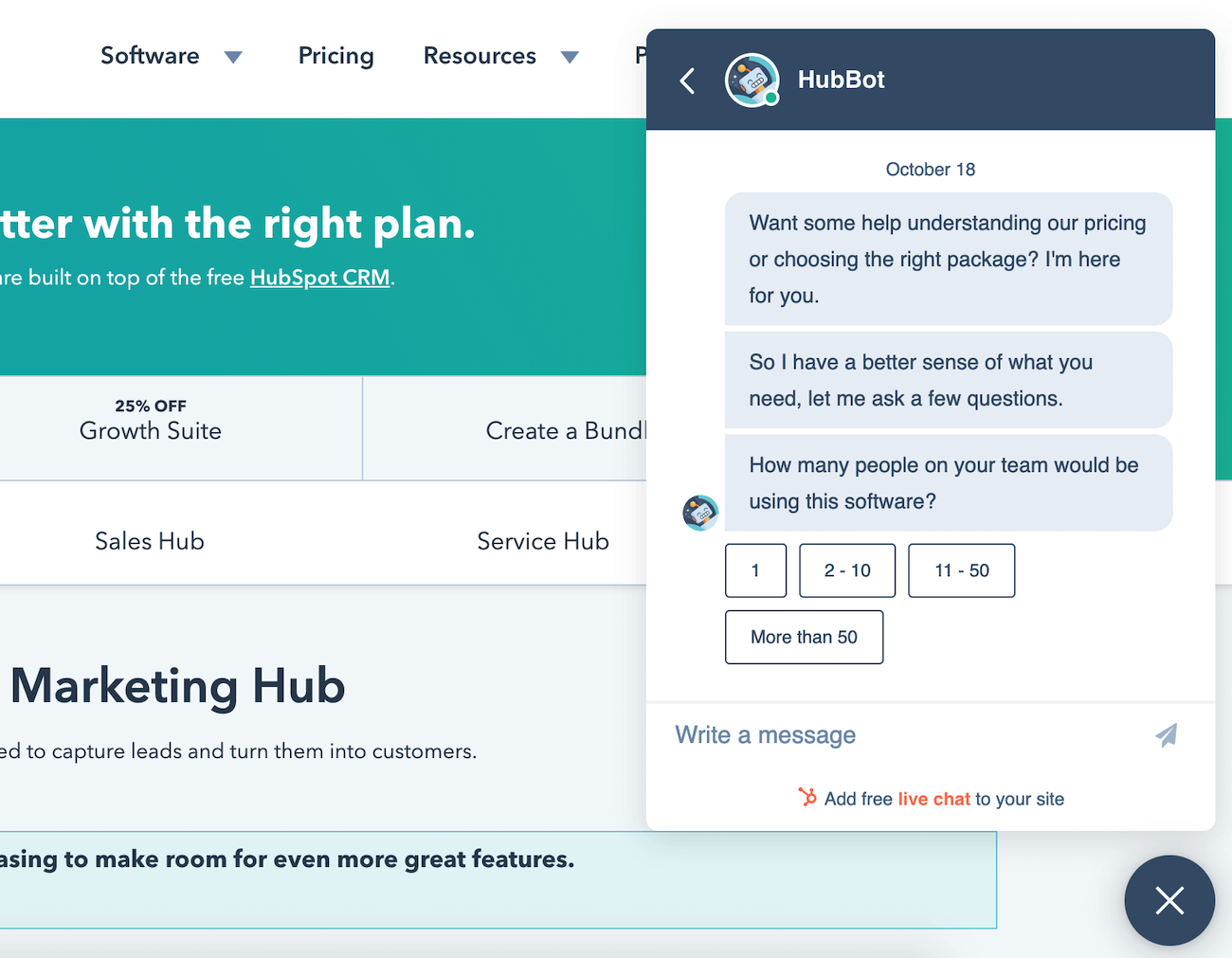
Site chat is a versatile tool. It can help the reader by answering questions relevant to the sales process and even generate leads.
Moreover, they make the relationship between the company and the reader more personal and conversational, breaking the mold of most business relationships.
3. Website visitor identification
Website visitor identification is a way of identifying your visitors even if they don’t fill out one of your lead capture forms.
Visitor identification software like Leadfeeder reveals the companies that have visited your website and enriches this with the contact information of employees.
What makes this different from other forms of content-led lead capture? With visitor identification, you can zero in on leads with intent.
Filter your leads by website pages visited, for example, and provide your sales team with a list of companies and contact information for people looking at your pricing page.
These are high-intent leads who want to buy your product right now. They just need one final push from your sales team.
With an integration to Slack and automated emails, you can alert your sales team immediately when a hot lead visits. Does your sales team only work in your CRM? No problem. You can create deals, tasks, and deadlines in your CRM with integrations to HubSpot, Salesforce, Pipedrive and more.
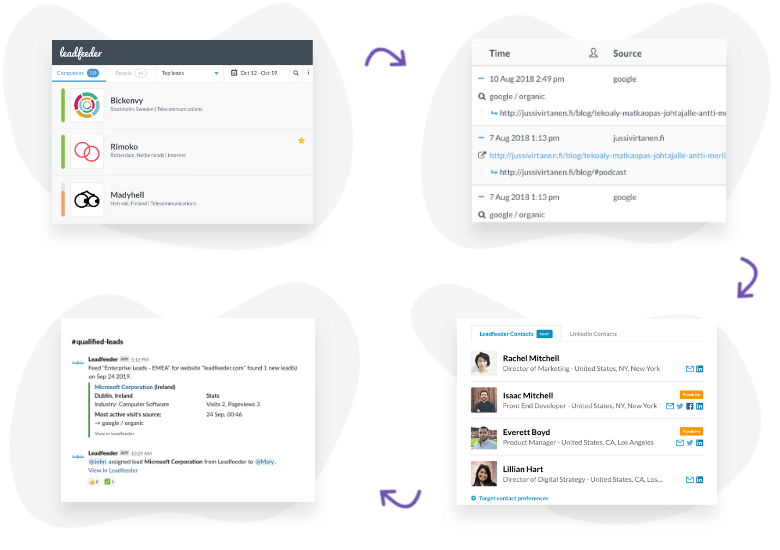
If the leads aren’t ready to buy yet, then feed them back into your retargeting campaigns to begin the nurturing process.
This is a great supplement to the traditional lead capture methods mentioned above. Instead of only gathering person-level data on a small percentage of your website visitors, you can gather company-level data on a large percentage.
This enables you to automate your lead generation process with minimal friction to your potential buyer.
The lead capture process involves getting the most important information from your visitors and using this to drive lead qualification and inform your sales team's work.
If you can't get the most critical information from your visitors, you can always add more in the lead nurturing stage or through data enrichment.
When in doubt, test your site to see which lead capture method produces the highest-quality leads.
Now that you’ve learned how to capture leads, it's time to discover how to qualify them.
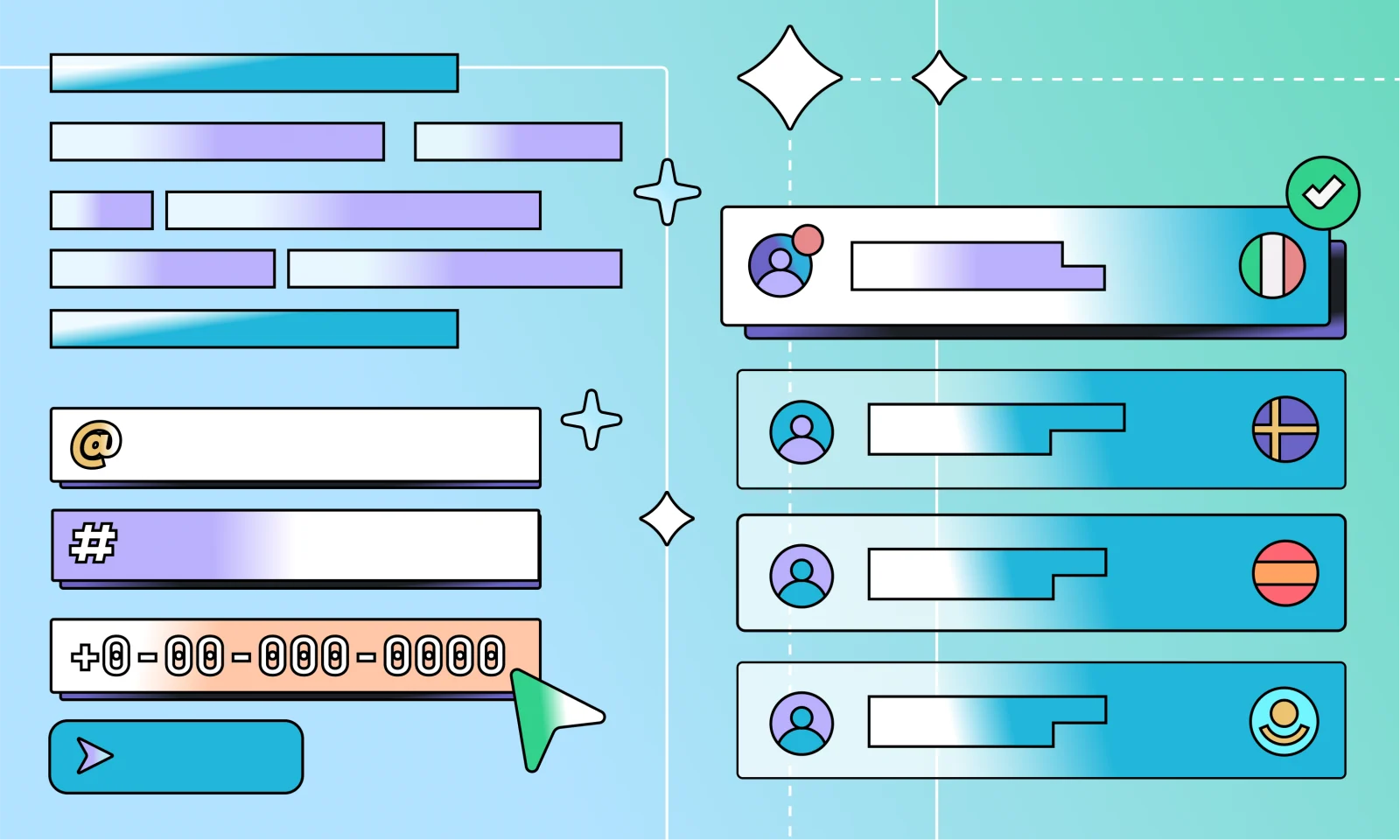
Top Lead Generation Tools of 2025
Read more
Lead generation ideas checklist
Here is our round-up checklist of effective lead-generation ideas to help you attract high-quality prospects:
- Create gated content: Offer valuable resources such as eBooks, whitepapers, or reports that users can access in exchange for their contact information.
- Host webinars or virtual events: Webinars are great for demonstrating expertise and engaging with your audience. Promote the event and capture leads through registrations.
- Leverage email marketing: Build targeted email campaigns that nurture prospects, offering them relevant content and solutions that guide them down the sales funnel.
- Use social media ads: Platforms like LinkedIn, Facebook, and Instagram offer targeted advertising options to reach specific audiences and collect leads through forms or landing pages.
- Create an interactive quiz or survey: Use interactive quizzes or surveys that engage users and collect data on their preferences, providing you with qualified leads.
- Develop a referral program: Encourage satisfied customers to refer others by offering incentives. Word-of-mouth recommendations often bring in high-quality leads.
- Optimize your website for lead capture: Add lead generation forms to your website, include compelling CTAs (calls-to-action), and use pop-ups or exit-intent offers to capture visitor information.
- Leverage SEO and content marketing: Invest in SEO to drive organic traffic to your blog posts, case studies, and resource hubs. High-quality content that answers your audience’s questions will naturally attract leads.
- Offer free trials or demos: Allow potential customers to experience your product or service firsthand through free trials or demos. Use sign-up forms to collect lead information.
- Run contests or giveaways: Host a contest or giveaway where participants enter by providing their contact information. Promote it through social media and email marketing for maximum reach.
- Collaborate on guest blogging or podcasting: Partner with industry influencers or complementary businesses to guest blog or appear on podcasts. Use this opportunity to promote lead magnets or direct traffic to your website.
- Utilize LinkedIn for outreach: LinkedIn is a great platform for B2B lead generation. Build connections with decision-makers, share relevant content, and utilize InMail to reach out to prospects directly.
- Run Google Ads for targeted keywords: Use Google Ads to target high-intent keywords. By directing search traffic to optimized landing pages, you can generate leads from people actively searching for solutions.
- Implement retargeting campaigns: Use retargeting ads to re-engage visitors who didn’t convert on their first visit. This keeps your brand top of mind and encourages them to return to your site.
- Partner with industry influencers: Collaborate with influencers or thought leaders to promote your product or service to their audience, generating leads through their network.
How to qualify leads
Now that you’ve captured your leads, more work remains to do. It’s time to qualify them.
Lead qualification is a critical component of a successful lead generation strategy. This is where you identify your quality leads.
The importance of focusing your marketing and sales efforts on leads likely to convert cannot be overstated. 67% of lost sales result from not properly qualifying leads before taking them through the sales process.

Source
Yet 61% of B2B marketers send all leads directly to sales.
In this chapter, you’ll learn how a simple lead qualification process works so you can ensure your sales team focuses on quality leads.
A 3-step process to qualify your leads
Despite your efforts to create relevant content and drive targeted traffic, many of your leads will not be ready to buy or the right fit for your company.
Lead qualification allows you to determine your leads' suitability for your product and their likelihood to convert. To do that, marketers often use a process called "lead scoring."
Lead scoring is a method for lead qualification that allows you to automatically add a numeric value to your lead based on a set of pre-defined criteria.
The final value will identify which leads are the most relevant for your sales team.
The entire lead qualification process can be broken down into three steps:
Step #1: Define the ideal lead
The idea behind the lead qualification process is to filter out irrelevant leads that won’t turn into valuable customers. To do this, you need to identify the attributes common to your most valuable customers, both when they are customers and in the lead-up to purchase.
These attributes can consist of:
- Demographic data
- Online behavior
- Company information
The attributes and values assigned to each don’t come out of thin air; they are built using past sales data, analytics, and intuition.
Start by talking to your sales team and have them tell you what attributes your leads should have. Looking at your past sales, you should see patterns that explain the attributes selected.
Check your CRM to see the common attributes of your most valuable customers. At the same time, check your website data to see online behavior leading up to the purchase (such as visiting a pricing page on your website, which could indicate a higher level of intent).
After you've defined a set of attributes, create a matrix and assign each one a score—the more valuable the attribute, the higher the score.
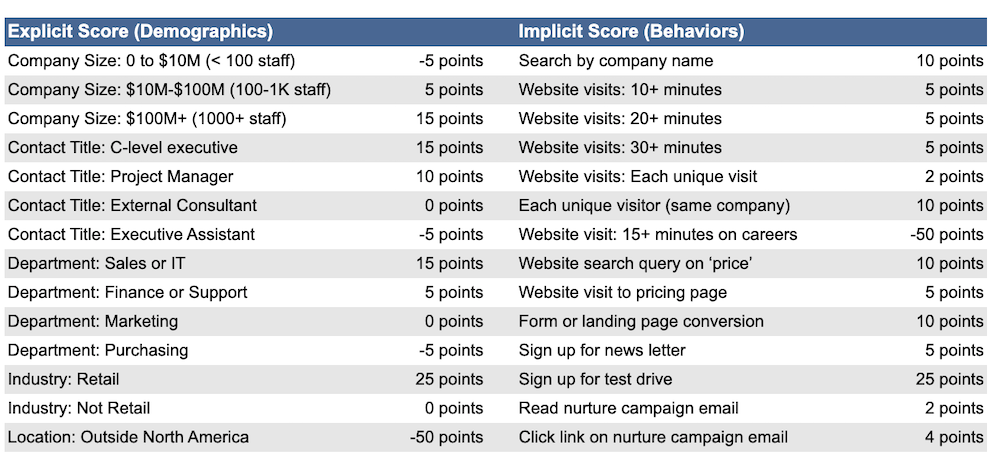
The combined score will indicate how good a fit a company is for your product or service and how far along they are in their buying process.
Step #2: Collect the information
After you've defined the ideal lead, you need to start collecting information, which you will then use to feed your qualification process.
Your lead capture form should ask for data to help kickstart the lead-scoring process. Ideally, you should aim to balance capturing as much data as possible from your leads and getting an acceptable conversion rate. The more data you ask, the more friction you create, and thus, the more likely your visitors will bounce from your lead capture process.
If you can't obtain some of the key information you need for your lead scoring, you can use data enrichment tools to add some of this data afterward. For example, Leadfeeder can send your website visitor data to your CRM and improve the depth of the lead's data.
As you start collecting data from your leads, integrate it with a single CRM or marketing automation system, where you will score them.
Most advanced CRM tools like Hubspot and Salesforce allow for that seamless integration. But in the case such integration isn't available, you can connect your CRM with other tools through the use of an API or a tool like Zapier.
Step #3: Score the leads
Now that you’ve defined your criteria and collected your data, it’s time to start scoring your leads.
Most CRMs and marketing automation systems will have this functionality built-in. You just need to set up the rules to automatically score the leads with the criteria you defined in step one.
Once you’ve set this up and are collecting data, identify the scoring thresholds that result in sales for your different audience segments. Once you’ve done this, you can set up notifications to alert your sales team when leads are approaching these scores.
Ultimately, what matters is that you send the right leads to your sales teams so they can focus their time on those most likely to bring value to your business.
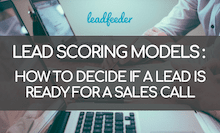
How to Decide If a Lead Is Ready for a Sales Call
Read more
Don’t fall into the trap of thinking lead generation ends as soon as you capture your lead information. It’s about quality over quantity.
As you qualify and score your leads, your sales team will know which to follow up on and which should be nurtured more by the marketing team.
It’s a learning process that should be continuously refined and improved.
The better you get at it, the higher the quality of leads you’ll generate.
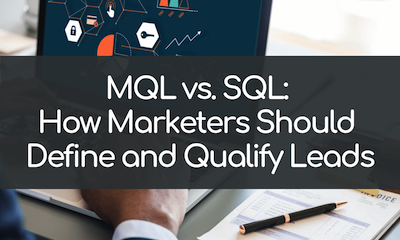
MQL vs. SQL: How Marketers Should Define and Qualify Leads
Read more
12 top tips for successful lead generation
Enhancing and fine-tuning a data-driven lead generation campaign involves leveraging data insights to improve your strategies and achieve better results. Let’s look at some of the best tips:
- Define clear objectives and metrics: Define SMART goals, ensuring they are specific, measurable, achievable, relevant, and time-bound. Choose KPIs like conversion rates, cost per lead, lead quality, and return on investment (ROI).
- Harness analytics tools: Take advantage of Google Analytics, HubSpot, or Marketo to track and analyze your campaign's performance. Gather B2B data from various sources such as CRM, email marketing, and social media to gain a comprehensive understanding.
- Categorize your audience: Divide your audience according to demographics such as age, gender, location, and occupation. You should also categorize based on behavior, considering past purchases, website interactions, and engagement levels.
- Tailor content: Make sure your content directly addresses the unique needs and challenges of your target audience. Test different formats, such as blogs, videos, and infographics, to discover which resonates most with your audience.
- Revamp website and landing pages: Enhance website navigation, loading speed, and mobile responsiveness. Strategically position clear and compelling calls to action across your website and landing pages. Streamline forms to reduce friction and increase submission rates.
- Use marketing automation: Develop automated email sequences to nurture leads according to their behavior and engagement levels. Utilize lead scoring to prioritize sales leads, focusing on those most likely to convert.
- Customize campaigns: Use interactive content to customize emails, landing pages, and website experiences. Tailor messaging to different segments or individual leads to enhance relevance and engagement.
- Monitor and refine paid campaigns: Regularly assess and refine bidding strategies in PPC campaigns. Continually evaluate ad performance and optimize for enhanced click-through and conversion rates. Implement retargeting campaigns to re-engage visitors who have shown interest but haven't converted.
- Assess and interpret data: Regularly review campaign performance data to identify trends and insights. Utilize tools such as heatmaps to visualize user interactions and areas of interest on your site.
- Keep content refreshed and new: Ensure your content stays relevant and maintains high SEO rankings. Stay on top of industry trends and shifts in consumer behavior, adapting strategies accordingly.
- Try out different channels and ideas: Investigate new marketing channels and platforms to expand your audience reach. Test innovative lead-generation tactics like interactive content, chatbots, and AI-driven personalization.
- Sync sales and marketing teams: Encourage regular feedback between sales and marketing to maintain continual refinement and alignment. Make sure both teams strive for shared sales goals and metrics, fostering transparent communication and collaboration.
Take your lead generation to the next level with Leadfeeder software
In this guide, we've simplified what you need to build a successful lead generation strategy. We understand it can feel overwhelming, but rest assured, you're not alone. Lead generation is a top priority for every B2B marketer, but it doesn't have to be daunting.
We've broken the process into easy-to-follow steps so you can master the essentials without the stress. You'll establish a strong foundation by understanding your sales funnel, identifying your buyers, and creating compelling content.
From there, focus on attracting traffic, capturing leads, and qualifying them for your sales team. It’s all about ongoing adjustments and discovering what works best. You'll see more effective lead generation as you learn what resonates with your audience and supports your sales goals.
Interested in seeing how Leadfeeder can help? Request a demo or free trial today!
FAQs about lead generation
What is the role of lead generation?
The role of lead generation is to attract and capture potential customers' interest in a product or service, guiding them into the sales funnel. It helps businesses identify and engage prospects, nurturing them into qualified leads that can be converted into paying customers, ultimately driving revenue growth and business expansion.
What is a lead generation tool?
A lead generation tool is software that helps businesses capture and manage leads efficiently. These tools include features like contact forms, landing page builders, and email automation, streamlining the lead generation process. They prioritize leads based on conversion potential and often integrate with CRM systems for seamless management.
What are lead generation services?
Lead generation services are specialized offerings from companies or agencies that help businesses attract and win potential customers. These services include targeted marketing campaigns, content creation, and data analytics to generate high-quality leads that can be converted into sales, enhancing overall business growth.
What are the most common challenges of lead generation?
One of the most common challenges in lead generation is targeting the right audience. Identifying and reaching out to prospects who are genuinely interested in your product or service can be a daunting task. Without a clear understanding of your target audience's demographics, behaviors, and preferences, your lead-generation efforts may fall short. Also, competition in the digital space is fierce, making it even more crucial to make your brand and offerings stand out to capture the attention of potential leads.
Another big challenge is maintaining consistency and effectiveness across various lead-generation channels. With the many platforms available, from social media and email marketing to SEO and content marketing, it can be overwhelming to manage and optimize each channel for maximum results. Trends and algorithms constantly evolve, so marketers must stay alert and adapt their strategies accordingly. Without a cohesive and integrated approach to lead generation, businesses may struggle to generate a steady stream of high-quality leads.
How do I identify my target audience for lead generation?
Identifying your target audience for lead generation begins with thorough market research. Analyze your customer base to understand their demographics, behaviors, and preferences. Look for patterns and commonalities among your most loyal and profitable customers. This data will help you create detailed buyer personas that represent your ideal customers, including factors such as age, gender, location, occupation, interests, and pain points.
What is the best example of lead generation?
One of the best examples of lead generation is offering a free eBook or whitepaper in exchange for a visitor's contact information on a landing page. By providing valuable, relevant content, businesses attract potential customers interested in their products or services, capturing their details for future follow-up and sales efforts.
How can I measure the effectiveness of my lead-generation efforts?
To figure out whether your lead generation efforts are working, establish precise objectives aligned with your goals. Track metrics such as website traffic, conversion rates, and engagement indicators like click-through rates and email opens. Make sure you use analytics tools to monitor these metrics well and gain insights into your campaign's performance.
Implement lead tracking and attribution models to trace leads' journey from initial interaction to conversion. By determining which marketing channels and touchpoints drive the most conversions, you can adapt your strategies accordingly. Remember to analyze data regularly to identify trends and areas for improvement and refine your lead generation tactics.
How to improve lead generation
Optimize your website for user experience to improve lead generation, ensuring it has clear calls-to-action and easy-to-navigate forms. Invest in high-quality content that addresses your target audience's pain points, and utilize SEO strategies to enhance visibility in search results.
Leverage social media platforms to engage with potential customers and promote your offerings while using targeted email marketing campaigns to nurture leads. You should also consider implementing tools like chatbots for real-time interaction and utilizing analytics to track performance, allowing you to adjust your strategies based on data-driven insights.
Is lead generation a tough job?
Yes, lead generation can be challenging, as it requires a deep understanding of target audiences, effective communication strategies, and the ability to create compelling content that captures interest. Marketers must navigate a competitive landscape, continually adapt to changing consumer behaviors, and leverage various tools and channels to consistently attract and convert leads, making it a demanding but essential aspect of business growth.
Share:





